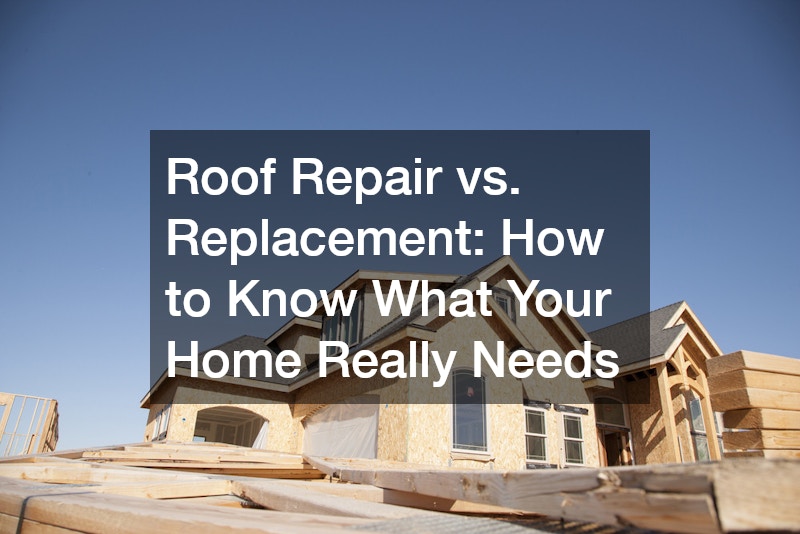
In this article, we explore the critical considerations homeowners must tackle when deciding whether their roof needs repair or a complete replacement. Understanding these aspects will help maintain your home’s integrity and value. Making the right choice ensures safety and can significantly influence your long-term financial planning.
How Do You Determine the Extent of Roof Damage?
Visible Signs of Roof Deterioration
Visible signs are often the first indicators that might need roof repair in Clifton Park, NY, or replacement. Common indicators include missing shingles, sagging, and signs of water damage inside the home.
Homeowners should periodically inspect their roofs, especially after severe weather conditions, to catch these signs early.
Moss or algae growth can also signal underlying issues. While these organisms may appear harmless, they can trap moisture on your roof, accelerating deterioration. Addressing such growth promptly can prevent further damage and assist in maintaining the roof’s longevity.
Cracked or curling shingles are another warning sign. This type of damage is often due to weather exposure and the natural aging of roofing materials. Assessing these visible cues helps in deciding whether a minor repair is sufficient or a replacement is necessary.
Professional Roof Inspection Processes
A professional roof inspection provides a thorough evaluation beyond what the untrained eye can see. Experts use specialized tools to detect issues such as leaks, structural deformations, and weakened areas. These inspections can offer peace of mind and guide the homeowner in making informed decisions.
During an inspection, professionals evaluate gutters, flashing, and seals to ensure they are functioning correctly. This comprehensive assessment helps in identifying all potential weak points. An annual inspection is recommended to stay ahead of any issues and extend the roof’s lifespan.
In addition to physical inspections, thermal imaging technology has evolved as a reliable method for detecting hidden water damage and insulation issues. This non-invasive technology aids in locating and addressing problems that could otherwise remain unnoticed until they cause significant damage.
Understanding Roof Lifespan and Material Longevity
The lifespan of a roof largely depends on the quality of the materials used and the prevailing climate. For instance, asphalt shingle roofs typically last 20 to 25 years, while metal and tile roofs can last upwards of 50 years. Understanding your current roof’s age and material is crucial in forecasting its remaining functional life.
Environmental factors also influence a roof’s longevity. Exposure to harsh weather, such as heavy snowfall, high winds, and intense UV radiation, can significantly reduce a roof’s lifespan. Regular maintenance and prompt repairs can combat these environmental stresses and prolong the roof’s useful life.
Technological advancements have improved roofing materials’ durability. Investing in higher quality materials may demand a larger upfront cost but can dramatically enhance longevity and reduce the frequency of repairs or replacements over time.
What Are the Cost Implications of Repair vs. Replacement?
Comparing Short-Term and Long-Term Expenses
Repairing a roof is often less costly than a full replacement in the short term. It allows homeowners to address specific issues, such as leaks or missing shingles, without the higher expenditure of installing a new roof. However, frequent repairs can add up over time, rivaling the cost of a new installation.
While a replacement may seem expensive initially, it offers a more permanent solution and can be more cost-effective in the long run. New roofs typically come with warranties and can improve energy efficiency, leading to lower utility bills. Evaluating these factors helps determine the best financial course of action.
Additionally, replacing an aging roof can enhance a home’s value, an essential consideration if you’re planning to sell. A new roof can be a selling point for prospective buyers, potentially allowing you to recoup the replacement cost through a higher sale price.
Budget Considerations for Repairs
Budget constraints often prompt homeowners to opt for repairs rather than replacements. Repair costs can vary significantly depending on the extent of damage and materials needed. Simple fixes are more affordable but may not address underlying issues, leading to recurring expenses.
Homeowners should obtain multiple quotes from reputable contractors to ensure competitive pricing for repairs. It’s crucial to weigh the repair costs against the roof’s remaining lifespan. In some cases, saving for a replacement might be more economical than continuous repairs.
Exploring financing options can also aid in making budget-friendly decisions. Some contractors offer payment plans or financing terms, easing the immediate financial burden of extensive repairs or replacement.
Investment Value and Resale Implications
Investing in a roof replacement can significantly boost your property’s market value. A new roof not only enhances curb appeal but also reassures potential buyers about the structural integrity of the home. This advantage can make your home more attractive in a competitive real estate market.
The peace of mind that comes with a new roof can be a critical selling point. Buyers often prioritize homes needing fewer immediate repairs, and an old, visibly deteriorated roof can be a deterring factor. A sound, well-maintained roof signals a well-cared-for house.
Cost recovery from an upgraded roof varies by region and market conditions, but on average, homeowners can expect to recoup a significant portion of the replacement cost upon selling. This financial insight helps align roofing decisions with overall home investment strategies.
Conclusion
Determining whether your roof requires repairs or a full replacement involves analyzing the extent of damage, financial implications, and potential benefits. By thoroughly examining these factors, homeowners can make informed decisions to protect and improve their investment. Balancing immediate needs with future planning is key to maintaining the integrity and value of your home.

